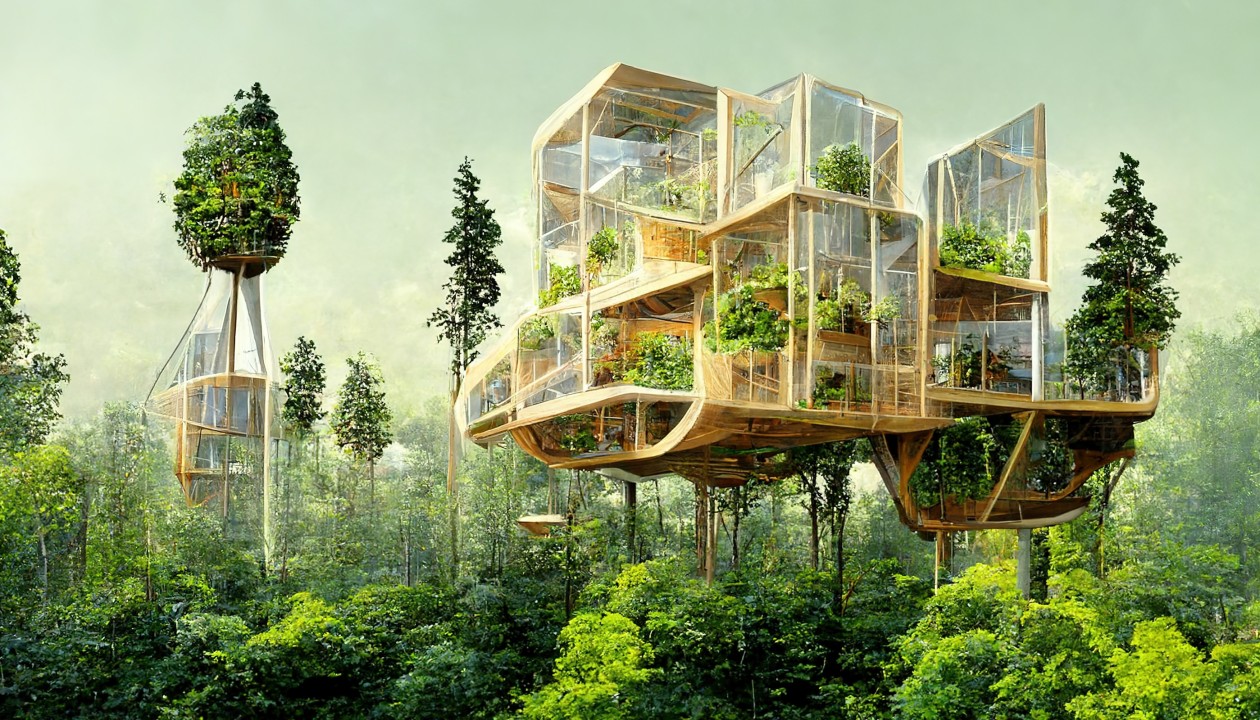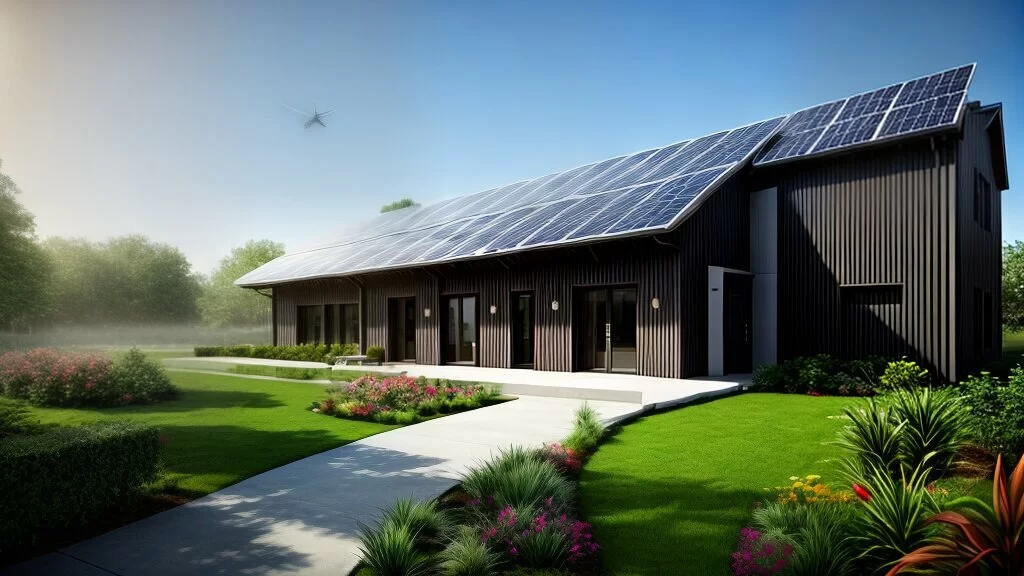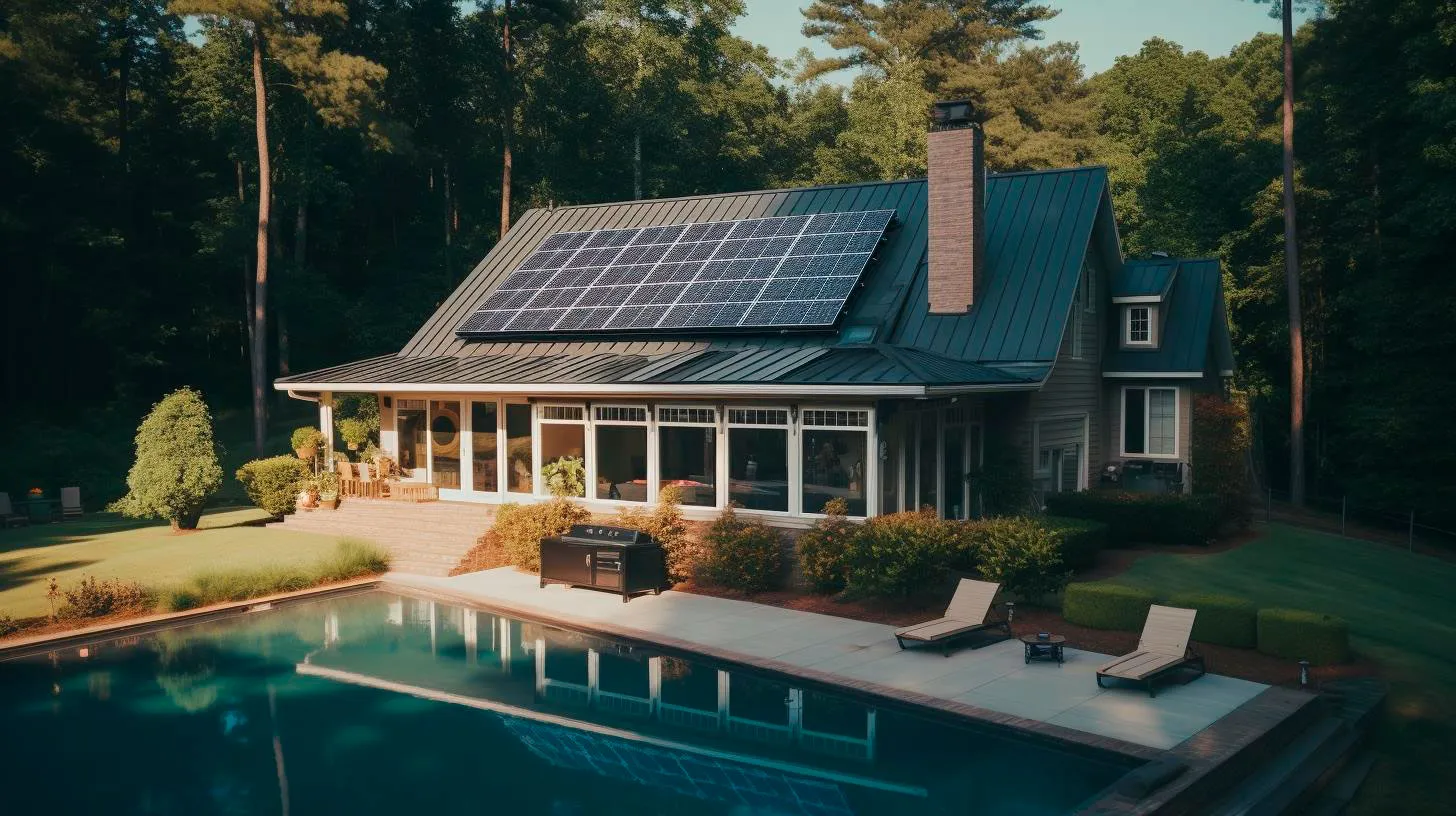
Introduction
Biophilic design and solar integration are two concepts that play a significant role in modern architecture and sustainable living. This article explores the historical background, key concepts, main discussion points, case studies, current trends, challenges, and future outlook of these concepts.
Historical Background
The concept of biophilic design originated in the 1980s and gained recognition for its ability to improve human well-being and productivity. Notable figures like Edward O. Wilson and Stephen R. Kellert have contributed significantly to the development of biophilic design principles. Solar integration, on the other hand, has a rich history that dates back to ancient civilizations’ passive solar architectural techniques and the invention of solar panels in the mid-20th century.
Key Concepts and Definitions
Biophilic design is rooted in the idea that humans have an innate connection with nature. It emphasizes incorporating natural elements into the built environment to enhance well-being. Solar integration involves the design and implementation of solar energy systems to reduce reliance on non-renewable energy sources. The combination of these two concepts creates sustainable and nature-inspired architecture that benefits both occupants and the environment.

Main Discussion Points
Importance of access to natural light in architecture
Natural light has numerous physiological and psychological benefits, including improved mood, productivity, and overall well-being. Biophilic design principles emphasize incorporating ample natural light through strategies like large windows, skylights, and light wells.
Integration of nature and green spaces in architectural design
Incorporating nature into built environments has positive effects on human health and well-being, such as reduced stress and increased cognitive function. Biophilic design principles promote the inclusion of green spaces like gardens, atriums, and living walls.

Use of sustainable materials and renewable energy sources
Sustainable materials play a crucial role in reducing the environmental impact of buildings. Biophilic design emphasizes the use of materials with low carbon footprints, such as reclaimed wood and recycled materials. Solar integration complements sustainable materials by utilizing solar energy as a renewable power source.
Case Studies or Examples
Real-world examples like the California Academy of Sciences and the Bullitt Center exemplify the successful implementation of biophilic design and solar integration. Design choices and strategies such as green roofs, daylight harvesting, and solar panel installations contribute to energy efficiency and occupant comfort.
Current Trends or Developments
Recent trends in biophilic design and solar integration include the integration of technology to optimize energy efficiency and occupant comfort. Technological advancements in solar energy systems further enhance the feasibility and effectiveness of solar integration. Recent research findings also highlight the positive impacts of these concepts on human health and environmental sustainability.
Challenges or Controversies
Implementing biophilic design and solar integration faces challenges, including cost considerations, limited space for green areas, and regulatory barriers. Controversies may arise regarding the aesthetic integration of nature in architectural design and the potential trade-offs between preserving natural habitats and constructing buildings. Solutions include financial incentives for sustainable design, innovative space-saving strategies, and collaborative efforts between architects, policymakers, and environmental advocates.

Future Outlook
The future of biophilic design and solar integration holds immense potential in addressing environmental concerns and creating sustainable communities. Advancements in technology, materials, and design approaches will further enhance the integration of nature and solar energy in architecture. These concepts will play a vital role in mitigating the impacts of climate change, reducing carbon footprints, and promoting healthy and resilient cities.
Conclusion
In conclusion, biophilic design and solar integration offer innovative and sustainable solutions for modern architecture and sustainable living. By incorporating natural elements and harnessing solar energy, architects can create buildings that enhance occupant well-being, reduce energy consumption, and contribute to a healthier planet. The continued exploration and implementation of these concepts will shape the future of architectural design and sustainable communities.
References
- Wilson, E. O. (1984). Biophilia. Harvard University Press.
- Kellert, S. R., Heerwagen, J., & Mador, M. L. (2008). Biophilic design: The theory, science, and practice of bringing buildings to life. Wiley.
- van den Dobbelsteen, A., & van Timmeren, A. (2013). Towards a sustainable building: The importance of biophilic architecture. International Journal of Sustainable Building Technology and Urban Development, 4(2), 125-130.
- Schröpfer, T., & Van Wyk, S. (2014). Biophilic design strategies: Definitions, applications, and recent developments. Architectural Science Review, 57(2), 139-146.




